The borders for flower beds they are barriers used to divide some spaces of the garden. The materials with which they are made are varied but it is always better to prefer natural ones, such as stone or wood, which fit better into the context, but on the market there are also solutions in aluminum or polyethylene.
But they are also a decorative as well as functional element, rationalizing the green space in a harmonious way: inside the flower beds you can insert flowers, plants but also stones of different colors, for example, to create a natural but easy to maintain environment, the so-called rock garden.
Delimit a flower bed or a larger space it is possible to do it in autonomous way and without spending excessive sums: thanks to do-it-yourself the garden will certainly be more personal and adherent to your tastes. Furthermore, it is can buy online everything you need to create a perfect border for your needs: here are some ideas and advice on what material to choose and how to use it to create a beautiful and functional border.
Wood edging
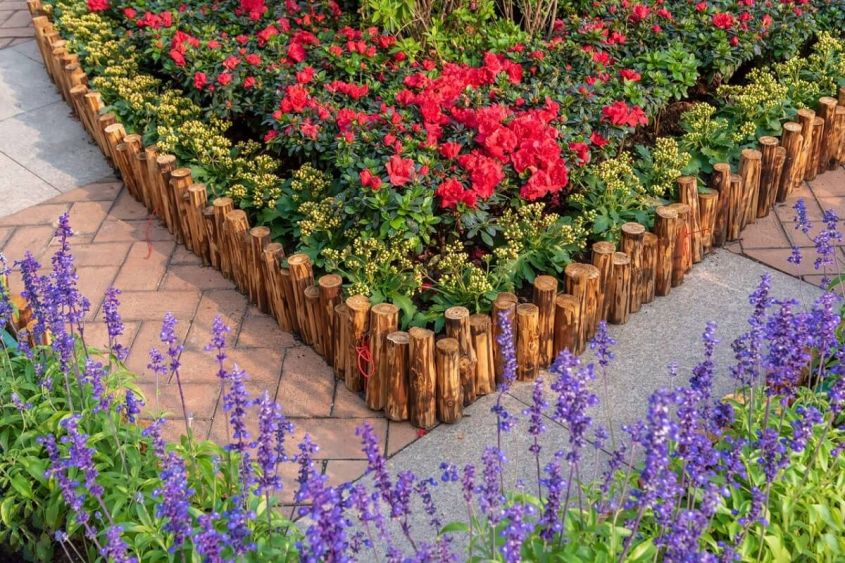 Shutterstock Photo | Lee Yiu Tung
Shutterstock Photo | Lee Yiu Tung
The wood it is certainly one of the most used materials to create the edging. You can choose logs of different sizes, reclaimed woods or specially created structures, treated and with a regular design (such as this one). If you want a natural and raw material, choose trees like the chestnut or the larch, highly resistant, which do not require too much maintenance and do not deteriorate with atmospheric agents.
Then there is a lot of wood versatile, since it can be used both vertically, by implanting the stakes directly into the ground, which horizontally, creating more or less complex structures. If we need to delimit a green space also in height, this is the ideal solution: the boards, smooth or rounded, are simply fixed on poles stuck in the ground. This type of structure can also be created with waste materials and also painted with colors turned on for greater customization.
 Shutterstock Photo | AVN Photo Lab
Shutterstock Photo | AVN Photo Lab
How to make it
To create a edge in wood flush with the ground it is necessary to dig along the entire perimeter to be delimited: the depth must correspond to 2/3 of the post to be inserted. If you choose ready-made structures, it is possible that only some stakes are to be inserted into the ground, so they must be positioned in a very stable way. If, on the other hand, reclaimed wood or single pieces are used, the ideal is to use a little mortar or specific glue to hold the woods together.
If, on the other hand, you want to create a raised edging, you have to choose rather large vertical poles and shape them so that they stick firmly into the ground, creating a sort of tip. They must then be cut in half vertically, in order to better adhere to the horizontal axes. This is the perfect solution to create flowerbeds-tubs, to contain a few plants that you want to keep separate.
The axes can be purchased already regular and treated, or you can work pieces of rough wood, even better if already used and therefore more “lived”: always remember to use protective products that make the material resistant to atmospheric agents and above all non-porous.
 Shutterstock Photo | Veja
Shutterstock Photo | Veja
Brick edging
 Shutterstock Photo | Christine Bird
Shutterstock Photo | Christine Bird
The tiles are a great classic always very elegant and that blends perfectly with a particularly rustic environment. Those in terracotta low to the ground are very resistant and practically eternal, and also lend themselves to being covered by any bushes or shrubs: they delimit in a very discreet. They must be fixed with cement or lime.
The one given by the tuff tiles (available in different sizes), definitely more present and visible, but no less elegant. You can opt to dig and insert them flush with the ground or create a raised row for a low border, or create dry stone walls or raised flower beds by holding the tiles together with the mortar. Being an easily workable material, it can also be used for create rounded shapes or adapt to specific sizes and shapes.
 Shutterstock Photo | Joanne Dale
Shutterstock Photo | Joanne Dale
How to make it
To make them you must first trace the shape of the flower bed then excavate the substrate and fill it with gravelto which it will then be compacted. The area is covered with earth and holes are created in which to insert the bricks, which have an interlocking shape. The starting point is the same also for traditional bricks, to be alternated with clinker ones.
Between each tuff tile there must be at least 1 cm of mortar to keep everything together: as the tuff bricks are very porous, they will adhere quickly and the grip will be strong. Once edging is complete, insert a perforated fabric, such as the one for artificial lakes, to cover the interior, then insert earth, soil, moss and plants.
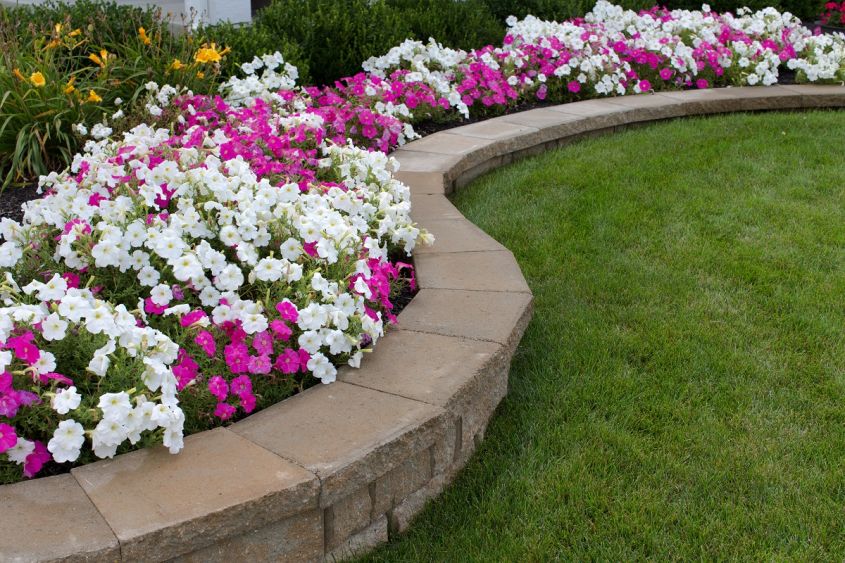 Shutterstock Photo | Ozgur Coskun
Shutterstock Photo | Ozgur Coskun
Concrete edging
 Shutterstock Photo | Beekeepx
Shutterstock Photo | Beekeepx
Concrete is the ideal solution if you want to give an “urban” touch to the garden or if you want one very usual edging. There are ready-to-buy reinforced concrete curbs that install on a very deep gravel base, as they must be driven into the ground for most of the height to be stable.
Otherwise you can buy the quick cement (like this one, absolutely cheap) and shape them to your liking. The ideal is to create regular plates of the desired size which can both be posed horizontally like tiles, perhaps alternating with pebbles or gravel, or vertically.
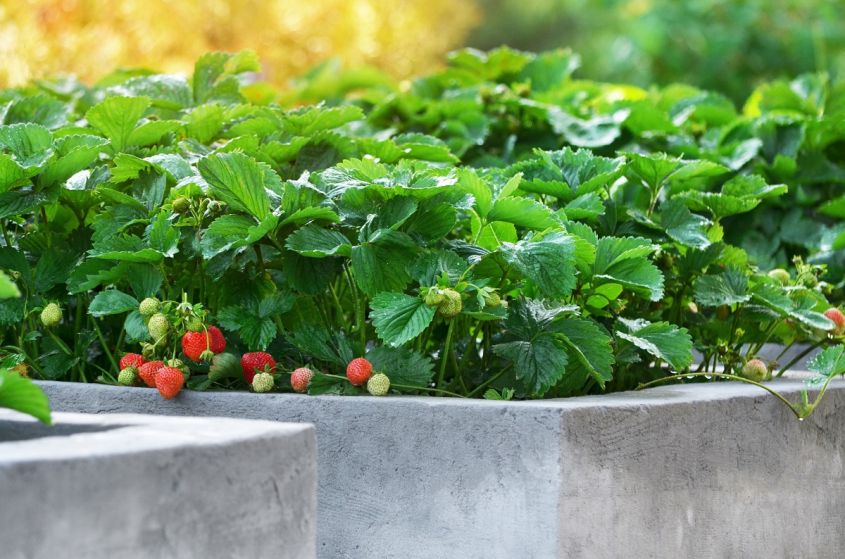 Shutterstock Photo | Julitt
Shutterstock Photo | Julitt
How to make it
To create a border with more or less thick blocks placed vertically, you must first dig a regular pit of the exact width of the concrete block e half the height deep: Stretching a line all the way through the hole will help insert the edge straight. Only after having laid all the edging, block everything with additional cement, laterally cast: when everything is dry, fill with earth.
 Shutterstock Photo | Paul Maguire
Shutterstock Photo | Paul Maguire
Stone edging
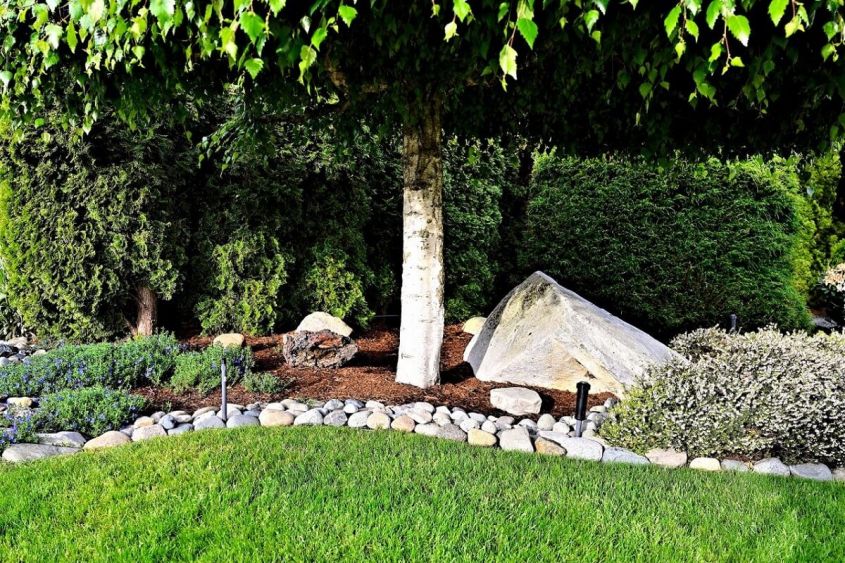 Shutterstock Photo | Elmar Langle
Shutterstock Photo | Elmar Langle
The stone edging is very elegant and it is also very economical (like this solution). If you choose stones of small to medium size It is best to place a mulch material underneath that the water is drained without creating moss or the edging sinking into the ground.
The size of the stone, in general, must be proportionate to space and vegetation: the effect must be harmonious and the edging must not take away the role of protagonists from the plants.
 Shutterstock Photo | Beekeepx
Shutterstock Photo | Beekeepx
How to make it
If we have a rather large flower bed, we can also indulge in boulders large and irregular, even better if collected by ourselves. In this case they go driven into the ground so that they are stable, making only a part pop out, so that they do not move and remain firm. Or we can simply place them on the ground, but blocking them with a little mortar between them will certainly make the edge more stable.
If instead we want to use small stones, pebbles or gravel, we must use some more forethought: after having cleaned the soil from weeds, we put the mulching fabric along the entire length. Using stones of different sizes makes the edging more compact. After placing the border, put some soil between the stones in order to hide the underlying material.
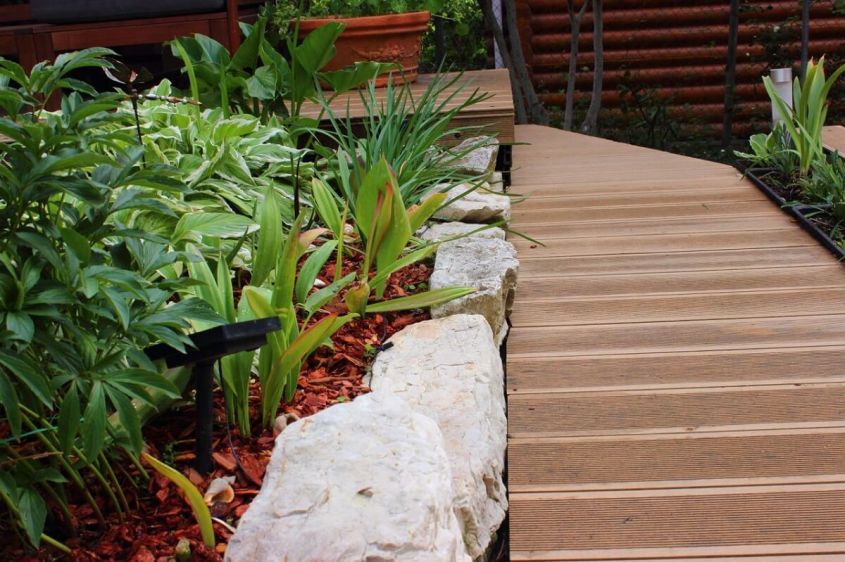 Shutterstock Photo | MZinchenko
Shutterstock Photo | MZinchenko


